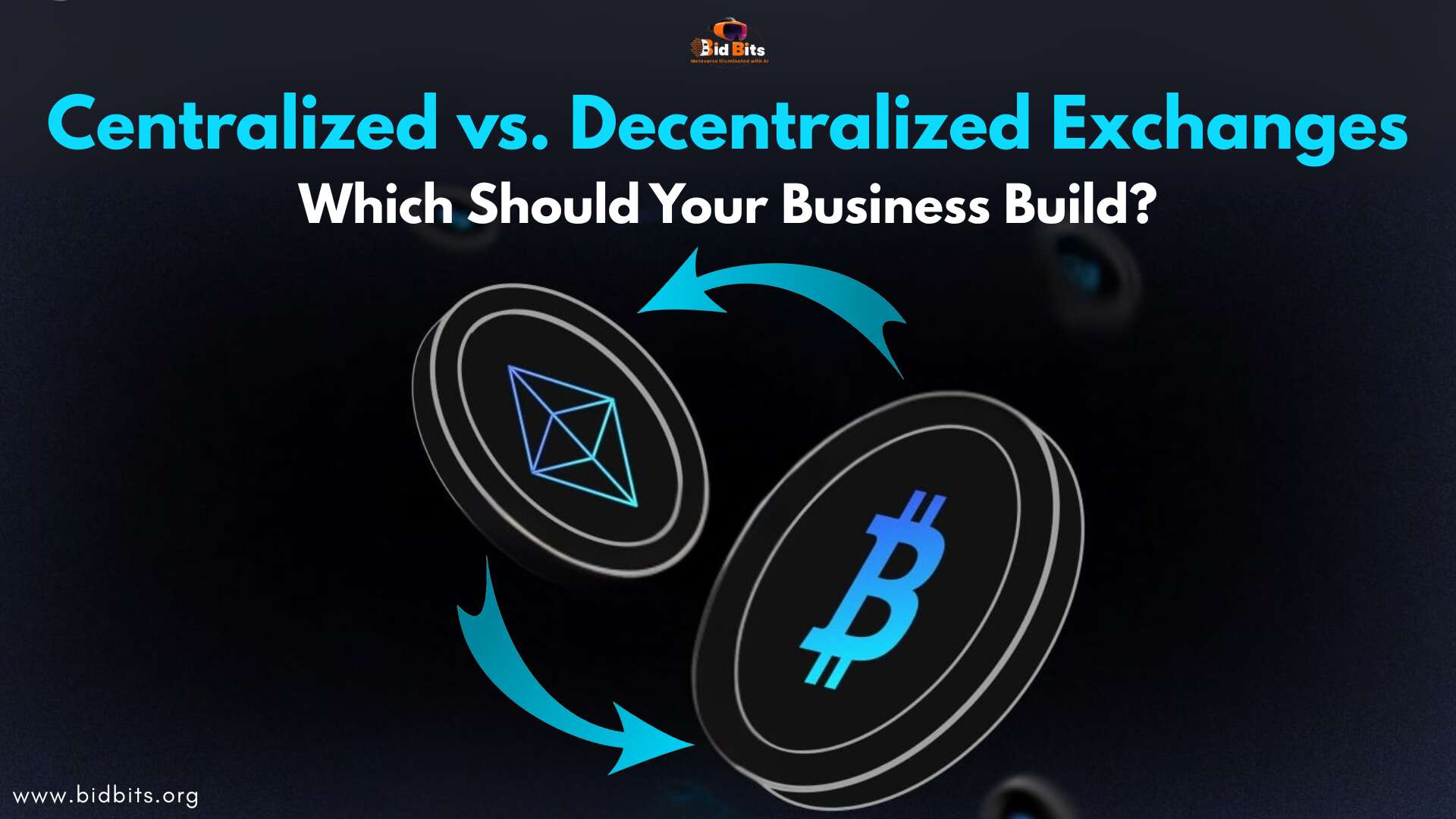Centralized vs Decentralized Exchanges: Which Should Your Business Build?

Launching a cryptocurrency exchange is one of the most exciting and high-potential ventures in the digital space.
More businesses are looking into the possibility of creating their own cryptocurrency trading platforms as a result of the growth of digital assets and the increasing interest in blockchain-based technology worldwide. But there’s a crucial question to address before construction starts:
Should you build a centralized exchange (CEX) or a decentralized exchange (DEX)?
The features, user base, income model, and long-term growth of your platform will all be influenced by this choice. To assist you in choosing the best option for your company, we will go over the main distinctions, advantages, and salient characteristics of both types in this article.
What is a Centralized Exchange (CEX)?
A centralized exchange is a platform where the company behind it controls all aspects of trading. Users create accounts, deposit funds, and trade on the platform using internal systems. The company manages user funds, order books, and security.
Popular examples: Binance, Coinbase, Kraken, Bitfinex
Benefits of Building a Centralized Exchange
1. User-Friendly Interface
CEX platforms provide simple, clean interfaces that are easy to use, even for beginners. Dashboards, trading tools, and customer support are designed to make trading accessible to everyone.
2. Fast Transactions
Transactions are processed off-chain within the exchange’s internal system. This leads to quick order matching, smooth performance, and minimal delays during peak trading hours.
3. Full Business Control
You decide how the platform works—from which trading pairs are listed to what fees are charged and how features are rolled out. You also have complete control over user accounts, design, and business strategy.
4. Easier to Comply with Regulations
CEXs can implement KYC and AML systems, allowing you to operate within legal frameworks. This helps build partnerships with banks and payment providers.
5. Multiple Revenue Streams
Centralized exchanges can generate income from:
- Trading and withdrawal fees
- Token listing charges
- Premium services and subscriptions
- Futures and margin trading
- Referral and affiliate programs
6. Fiat Integration
Centralized exchanges can integrate with banks and payment gateways. This allows users to buy crypto using credit cards, bank transfers, and other fiat methods.
What is a Decentralized Exchange (DEX)?
A decentralized exchange is a blockchain-based platform that allows users to trade directly with one another through smart contracts. Users don’t need to create accounts or deposit funds, trades happen directly from their wallets.
Popular examples: Uniswap, PancakeSwap, dYdX, SushiSwap
Benefits of Building a Decentralized Exchange
1. Non-Custodial Structure
Users hold their funds in their own wallets and connect directly to the platform. There is no central authority managing user assets.
2. Open Access
Anyone with a crypto wallet can trade without signing up or going through verification processes. This makes the platform accessible to users from all over the world, regardless of location.
3. Lower Operational Costs
DEXs use smart contracts to automate most processes. You don’t need a large support or operations team, and you avoid the costs of handling user funds or identity verification.
4. Token Ecosystem and Incentives
DEXs can launch native tokens for governance, staking, liquidity mining, or community rewards. Tokens can also be used for discounts and platform utility.
5. Part of the Web3 and DeFi Ecosystem
DEXs integrate with Web3 wallets like MetaMask and allow interaction with other decentralized apps. This opens the door to partnerships with DeFi protocols and other blockchain services.
CEX vs. DEX—Key Differences |
||
|---|---|---|
| Feature | Centralized Exchange (CEX) | Decentralized Exchange (DEX) |
| Control | Company-managed | Smart contract/governance based |
| User Data | KYC, stored accounts | No user data stored |
| Custody | Platform holds funds | Users control their wallets |
| Speed | Fast (off-chain) | Slower (on-chain confirmations) |
| Compliance | Easier to regulate | Often unregulated |
| Revenue Model | Diverse monetization options | Token-based incentives |
| User Base | Beginners and institutions | Tech-savvy and DeFi users |
Key Features Your Exchange Must Have
Whether you’re building a centralized or decentralized exchange, certain core features are essential to deliver a reliable, competitive platform.
- Intuitive User Interface: The design should be clean, modern, and easy to navigate. Make it simple for users to sign up (CEX) or connect their wallets (DEX), access markets, and manage their portfolios.
- Strong Liquidity: Liquidity is crucial for smooth trading. You can achieve this by partnering with market makers (CEX) or offering rewards for liquidity providers (DEX).
- Advanced Trading Tools: Include features like live charts, limit and market orders, portfolio tracking, and options for margin or futures trading (for CEX).
- Security Infrastructure: Use strong security measures such as 2FA, cold wallet storage, and protection against DDoS attacks. For DEX, ensure smart contracts are audited and safe.
- Multi-Currency Support: Offer a wide selection of popular and trending cryptocurrencies. This makes your exchange more appealing to a larger audience.
- Mobile Compatibility: Your exchange should work seamlessly on mobile devices. Whether it’s a responsive web platform or a dedicated app, mobile access increases usage.
- Regulatory Tools (For CEX): Implement secure, fast KYC processes, and support regulatory reporting tools to help meet compliance standards.
- Token Listing Panel: Allow crypto projects to list their tokens on your exchange through a structured listing process. This opens up a new revenue stream and helps you stay updated with the market.
- Real-Time Analytics: Provide users with detailed stats about their portfolio, trade history, market data, and performance metrics.
Can You Build Both? Consider a Hybrid Exchange
Hybrid exchanges combine the best features of CEX and DEX. They offer:
- CEX-level speed and usability
- DEX-level transparency and control
- Support for both fiat and crypto
- On-chain settlement for security
Hybrid models help you reach more users while keeping compliance and decentralization in balance.
Final Thoughts: Choose the Right Model for Your Business
Building a crypto exchange is a powerful opportunity. But choosing between a centralized or decentralized model depends on your goals, resources, and user base.
- Choose Centralized Exchange if you want high control, fiat support, and revenue from multiple sources.
- Choose Decentralized Exchange if you want a community-driven, Web3-native platform that prioritizes security and privacy.
- Choose Hybrid Exchange if you want the best of both.
Let’s Build Your Crypto Exchange
If you’re ready to launch a crypto exchange that is secure, scalable, and designed for growth, we can help.
We offer full development support, from design to deployment, and help you choose the right architecture for your business goals.
Contact us today to start building your CEX, DEX, or hybrid platform.

